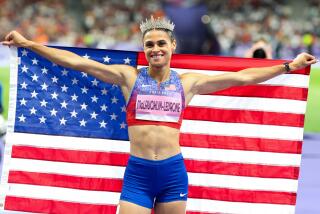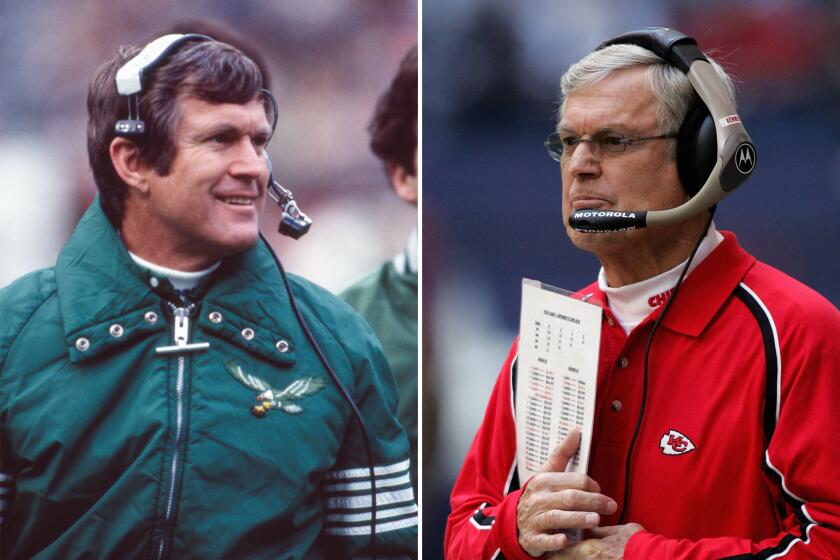Indy Is F1’s Best Chance at U.S. Success
- Share via
Formula One has prospered without burning rubber on American asphalt for nine years. The globe-trotting circuit hopes for even more success by returning to the United States.
And when the racers compete in the U.S. Grand Prix on Sept. 24 at Indianapolis Motor Speedway, Formula One can be considered a true world championship once again.
“Any championship which includes America is a better world championship,” said Ron Dennis, managing director of the topflight McLaren team.
The fertile ground of American business beckons Formula One teams that have annual budgets of $100 million or more. Some good NASCAR teams are racing for $10 million.
The open-wheel series, which races on five continents and is considered the most sophisticated racing in the world, was a regular visitor to the United States from 1959 through 1991, but never found a home. It raced with varied success in Detroit; Las Vegas; Dallas; Phoenix; Sebring, Fla.; Riverside, Calif.; Watkins Glen, N.Y.; and Long Beach, Calif.
But F1 never really caught on with the American public, and became too expensive for U.S. promoters.
At that point, F1 had no American teams or drivers--the last was Michael Andretti in 1993--and virtually no American involvement other than a few multinational companies as sponsors.
Interest in NASCAR was starting to take off and CART, then the top open-wheel series in America, was solidly entrenched here.
So, Formula One gave up on America after a disastrous experience in its three years in Phoenix.
Only 15,000 showed up for final race on a downtown street circuit, and American TV ratings were low.
Now F1 is back, hoping that tradition-busting Tony George, president of the Indianapolis speedway and creator of CART’s rival, the Indy Racing League, can put it in the fast lane with American fans.
George has spent an estimated $45 million to upgrade the speedway and build a Formula One road course and garages. Although the new track is too far from some grandstands to use all the speedway’s 300,000 permanent seats, more than 200,000 tickets have been sold.
“Clearly, the dissension between CART and the Indianapolis organization has given us the opportunity to go back to America,” Dennis said. “I am sure there will be the usual level of American razzmatazz around it.
“But it will be three to five years before we know whether we have put F1 back on the map in the USA.”
In fact, Formula One people understand this is probably the last good chance they will have for a while to make a go of it in this country.
“If we don’t crack this one we can probably wave goodbye to America,” said Eddie Jordan of Ireland, owner of the Jordan F1 team. “This is a golden nugget and we must do the best job we can.”
Although the first race is already assured of being a financial success, there are nagging concerns about the future of the new event.
“America is full of national sport,” Dennis said. “That might make it difficult for Formula One to get a solid foothold.”
But Craig Pollock, owner of the British American Racing team, thinks the speedway should make the race a success.
“If we get it wrong, it’s our own fault,” he said.
Unlike highly competitive NASCAR, CART and the IRL, Formula One has only a handful of winners, is extremely technical and usually has little passing.
“It’s much more like a chess game in Formula One,” explained Jaguar Racing driver Eddie Irvine of Northern Ireland.
He hopes for a great race in September.
“What we don’t want is to . . . bore everyone to tears,” Irvine said. “In F1 you never know. It could be the best race of the year, or it could be junk.”
*
On the Net: U.S. Grand Prix: https://www.usgpindy.com/; Formula One: https://www.f1-racing.org/
More to Read
Go beyond the scoreboard
Get the latest on L.A.'s teams in the daily Sports Report newsletter.
You may occasionally receive promotional content from the Los Angeles Times.










